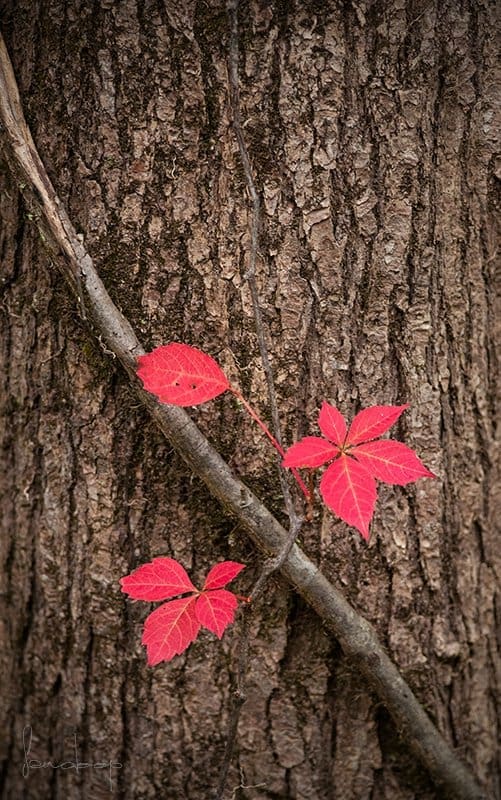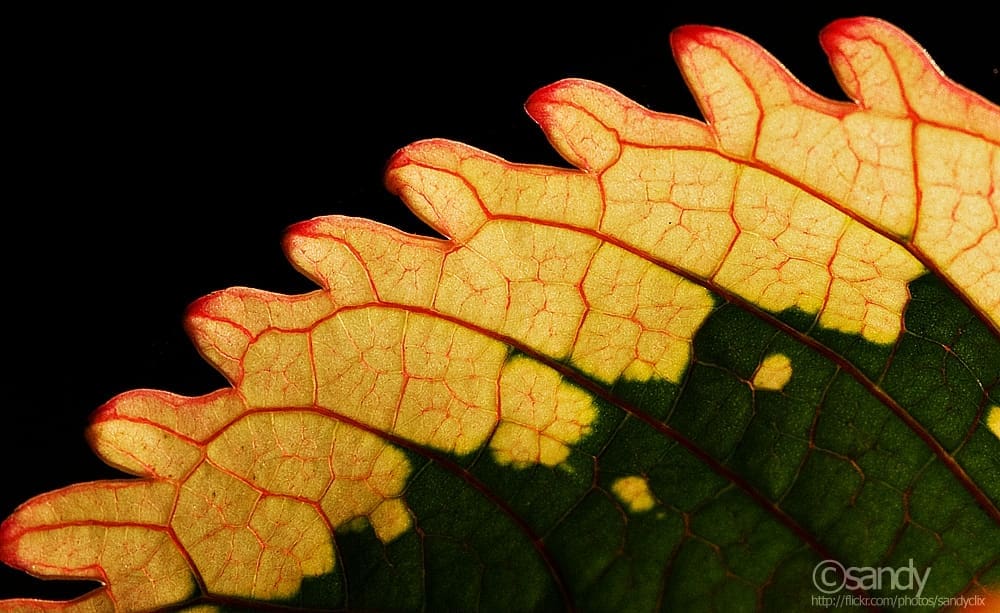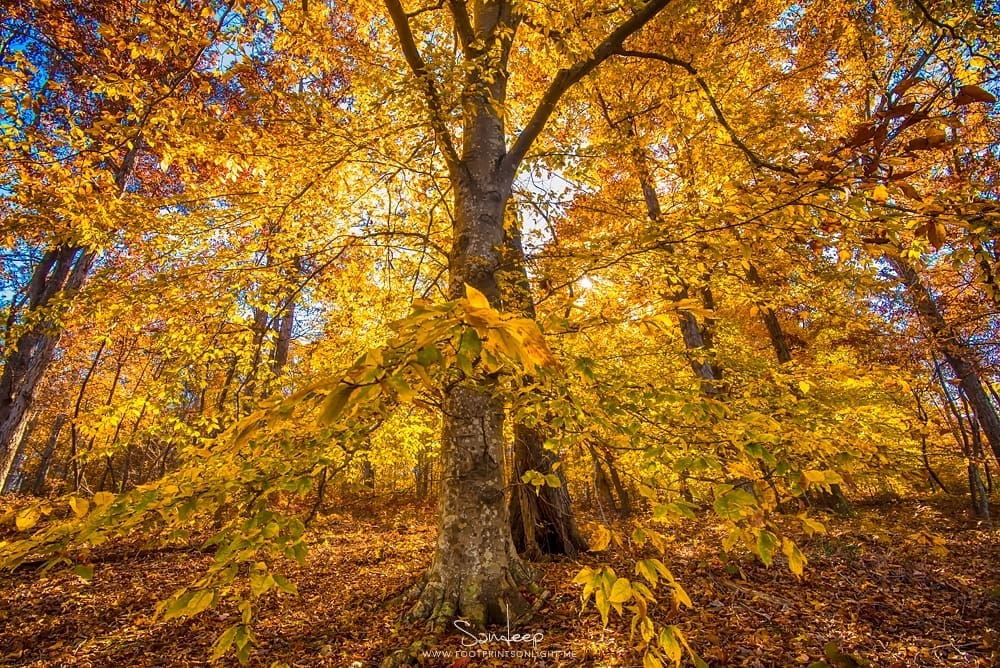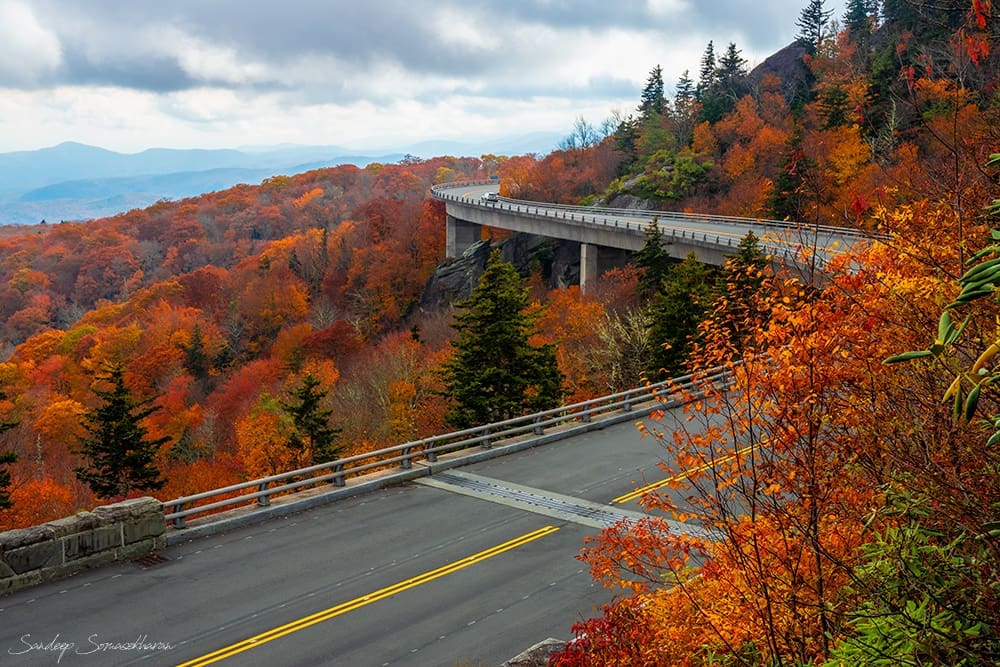
I have vivid memories of my first fall in the US. I had waited eagerly for October to see the changes in foliage colors and it started with the leaves on the topmost branches of trees. Even tiny saplings had started to sport a rather duller greenish hue. As days passed, the colors started getting more vibrant on those leaves. Yellow, pink, orange and several shades of red started to appear. It wasn’t much but was enough to get me excited about what was about to come. In the suburban areas of Wake County where I lived, entire trees started changing colors around late October. However, it was not as intense as I would see in the hills a couple of years later, as here each tree had its own time-table to deal with the cold weather.

Somewhere during primary school days, I came across the word ‘chlorophyll’. The teacher had explained that it was produced by cells on the leaves called chloroplasts, and helped plants convert solar energy into food. I would also learn that it was chlorophyll that gave the leaves the green color. Somewhere down the line, I remember my mom explaining to me that some plants — such as ornamental crotons — have a lower level of chlorophyll, which is why they have vibrant non-green colors. Coming from the tropical state of Kerala, I wasn’t exposed to the concept of fall. Looking back now, I feel that would have been a fantastic example to help learn how plants work.

My first outing to catch the fall in its all glory was a day-trip to the hills in 2015. I was disappointed with the colors, which were patchy at best. Everywhere I went I heard people mention, “the peak (fall) is another couple of weeks out.” There were a few trees standing in the dazzling peak fall display, but that was pretty much everything I would see that year. Nevertheless, I enjoyed my first tryst with the high-altitude broadleaved forests and returned with a mental checklist of how I would need to plan better to catch the trees during the peak. I wouldn’t make it to the hills for the next two falls, as life happened. Despite all that, I still managed to go out and spend time with the trees changing colors in my neighborhood.

To learn what happens in the fall, we need to start with how trees work in summer. And we need to navigate away from the tropics, where the intensity of sunlight isn’t that different across seasons. All’s well in the summer and there is plenty of sunlight and a decent amount of water in the underground reservoirs replenished by the autumn rains and winter snow. The trees work in overdrive during this period of abundance, guzzling water up their trunk and the solar panels. The leaves make use of the extended day time to collect as much energy — sunlight — as possible.

As we know, sunlight consists of three primary colors — red, green and blue. Chlorophyll is pretty selective in energy absorption and takes only the red and blue colors for itself, and reflects the leftover green light. That is what makes leaves sport their verdant green color. The leaves then set to work as the kitchen of the tree. It blends the carbon dioxide present in the air and the water siphoned up by the trunk and uses the energy from sunlight to synthesize their food — carbohydrates — which get stored in the trunk. In the process, some of the waste byproduct that they create is expelled — oxygen, that elixir of life that we gleefully gulp in to sustain our life.

As fall approaches, the earth tilts slightly on its axis. This makes one hemisphere receive sunlight in a rather glancing angle, and for a shorter duration as well. As the angle of tilt increases, the amount of sunlight absorbed by plants in that hemisphere starts to plummet by the day. The days get shorter and the temperature drops. Autumn rain-clouds blot out the sun, depriving leaves of solar energy. Trees know that it is not an energy-efficient process now to keep fighting against the elements to manufacture food. They call it a day and then the chlorophyll production stops. The leaves start reflecting the colors that they once absorbed, and what we then see is a rapturous explosion of colors.

Based on the kind of plants, the colors that they exhibit vary. While some just turn brown, others turn pink, orange, red or yellow. Soon they drop, in an effort to shutter down the trees from damage during winter. During winter, water in the leaves freezes up in the tiny tubes and leads to loss of water through transpiration. Once the snow falls, the branches could snap due to the weight of the snow that sticks to the leaves.

In subsequent years, I tried two different strategies for fall. I made a trip to a higher latitude once and to a higher altitude the next time. During my trip to Maine in 2018, I witnessed huge swaths of trees bathed in fall colors. Only the coniferous trees stood out in clumps of green amidst the riot of colors.

The only trees that remain green during the fall are the coniferous/pine trees that do not have broad leaves. It takes less energy for these trees to protect themselves from the risks of winter. They cover the needles with a kind of wax, which prevents freezing or loss of moisture. Their unique coniferous structure ensures that any falling snow slides off without adding load to the branches. With this approach, they waste no energy and time in spring, trying to sprout new leaves. A contemporary analogy would be how companies lay off workers during a dry year. They have to bear the additional cost of hiring and training new people when the business improves, compared to the ones that retained employees.

The fall of 2019 had me heading over to the Appalachian mountains. The higher altitudes were already past the peak, as the trees looked dull and leafless. As I drove along the hills exploring, I came across patches of forest that were stunningly colorful at lower altitudes. As it gets colder, the colors fade from uphill and descend gradually downhill and into the plains. Once into the plains, the colors are less uniform as trees are in varying degrees of health and resistance to the cold weather, shutting down when their hour comes. Trees planted together in the urban landscapes however change their foliage evenly as most of them are of the same age and constitution.

As I sit writing this, the trees are awakening from their slumber, and the flowering trees are putting up a show. But I’m not that impressed, am I? For I’ve watched the spectacular fall in all its glory, and am already thinking about where I’d go this October to applaud the leaves as they die.
